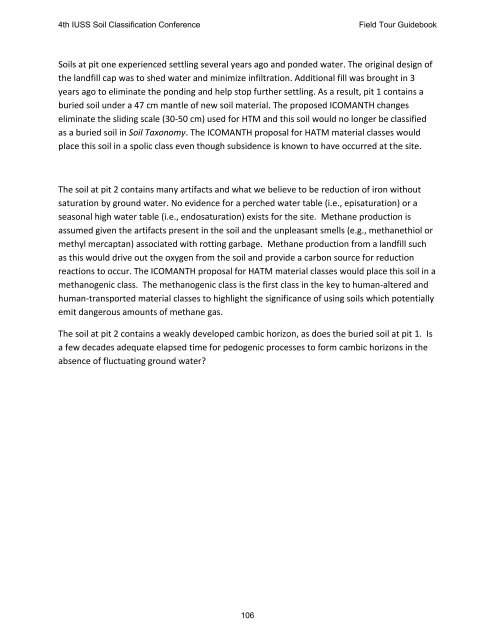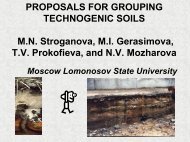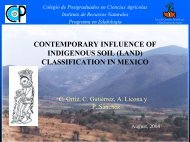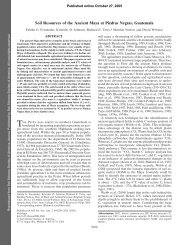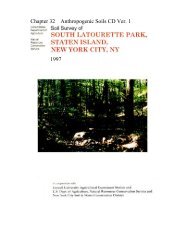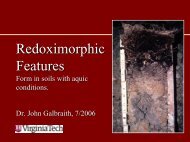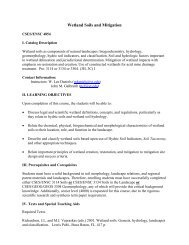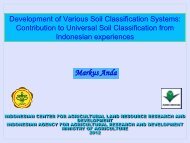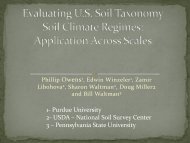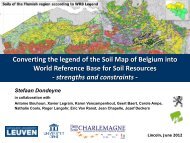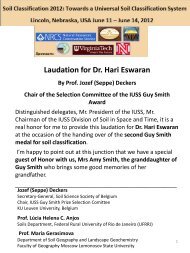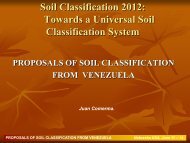Nebraska Soils Field Trip - Virginia Tech
Nebraska Soils Field Trip - Virginia Tech
Nebraska Soils Field Trip - Virginia Tech
Create successful ePaper yourself
Turn your PDF publications into a flip-book with our unique Google optimized e-Paper software.
4th IUSS Soil Classification Conference <strong>Field</strong> Tour Guidebook<br />
<strong>Soils</strong> at pit one experienced settling several years ago and ponded water. The original design of<br />
the landfill cap was to shed water and minimize infiltration. Additional fill was brought in 3<br />
years ago to eliminate the ponding and help stop further settling. As a result, pit 1 contains a<br />
buried soil under a 47 cm mantle of new soil material. The proposed ICOMANTH changes<br />
eliminate the sliding scale (30-50 cm) used for HTM and this soil would no longer be classified<br />
as a buried soil in Soil Taxonomy. The ICOMANTH proposal for HATM material classes would<br />
place this soil in a spolic class even though subsidence is known to have occurred at the site.<br />
The soil at pit 2 contains many artifacts and what we believe to be reduction of iron without<br />
saturation by ground water. No evidence for a perched water table (i.e., episaturation) or a<br />
seasonal high water table (i.e., endosaturation) exists for the site. Methane production is<br />
assumed given the artifacts present in the soil and the unpleasant smells (e.g., methanethiol or<br />
methyl mercaptan) associated with rotting garbage. Methane production from a landfill such<br />
as this would drive out the oxygen from the soil and provide a carbon source for reduction<br />
reactions to occur. The ICOMANTH proposal for HATM material classes would place this soil in a<br />
methanogenic class. The methanogenic class is the first class in the key to human-altered and<br />
human-transported material classes to highlight the significance of using soils which potentially<br />
emit dangerous amounts of methane gas.<br />
The soil at pit 2 contains a weakly developed cambic horizon, as does the buried soil at pit 1. Is<br />
a few decades adequate elapsed time for pedogenic processes to form cambic horizons in the<br />
absence of fluctuating ground water?<br />
106


